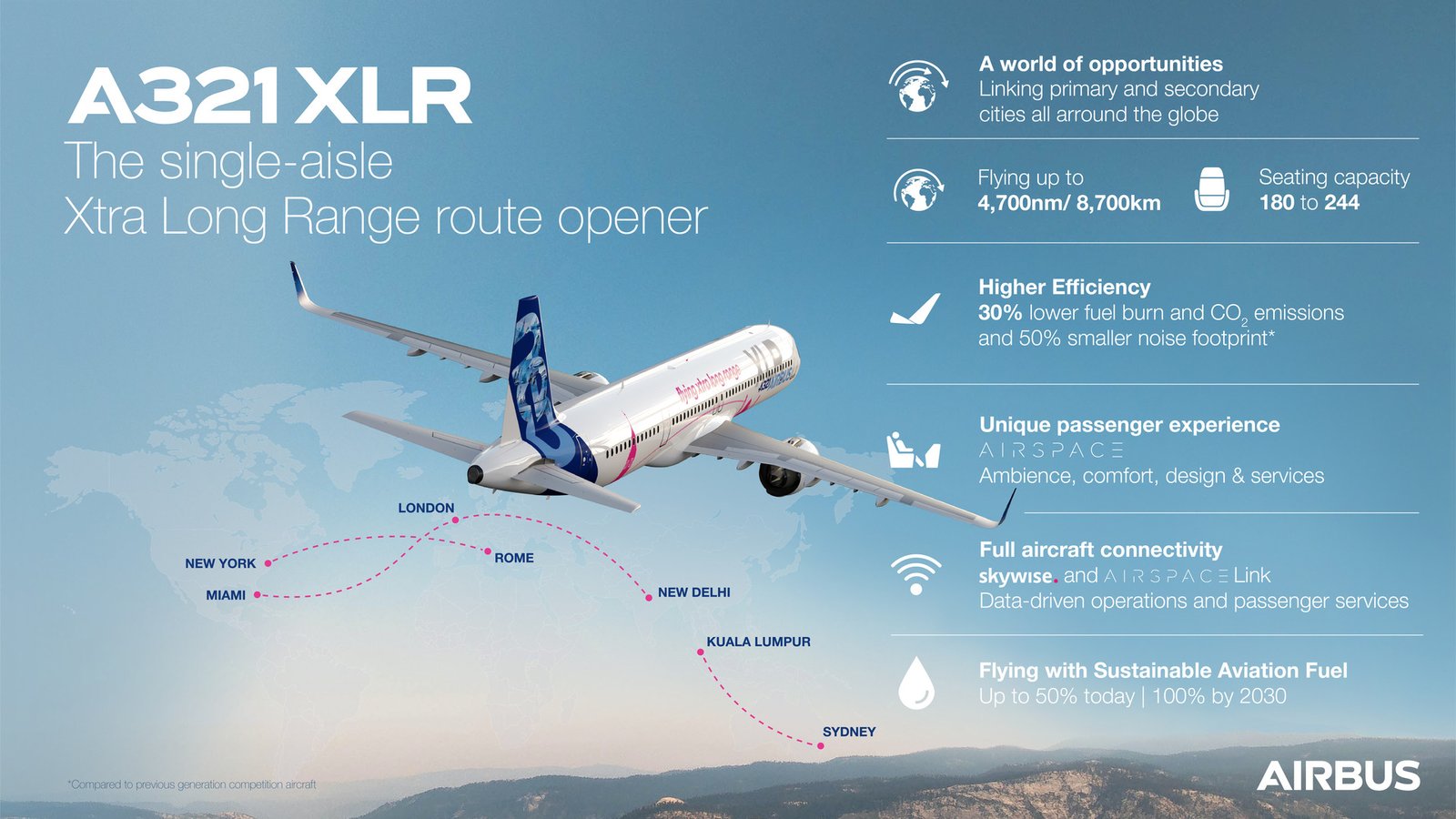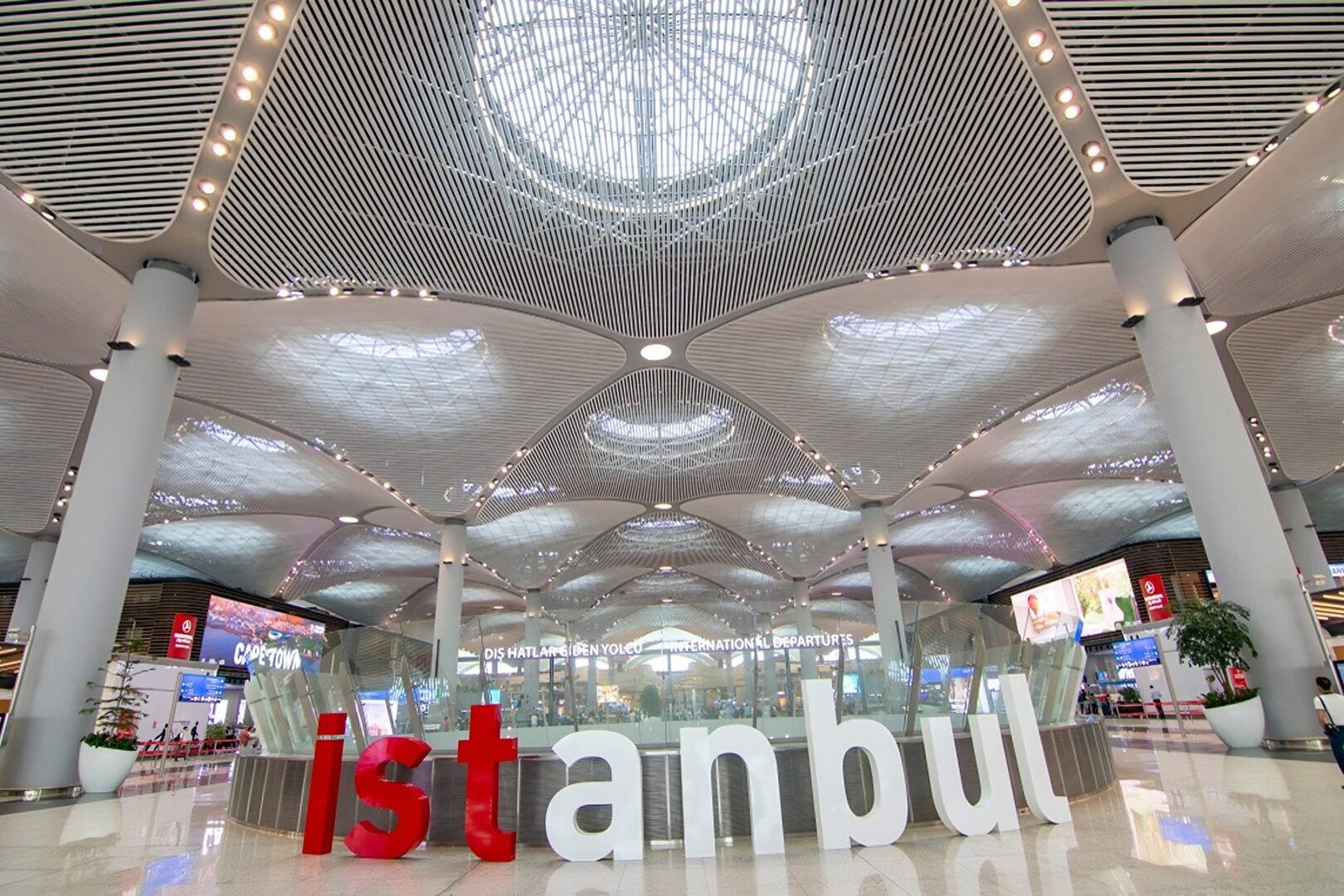The aviation industry is on the cusp of a profound transformation, and at its heart is a marvel of modern engineering: the Airbus A321XLR. This “eXtra-Long-Range” narrow-body aircraft, capable of flying up to 4,700 nautical miles (8,700 km), is not just an incremental improvement; it represents a paradigm shift. For too long, the economics of long-haul travel dictated the use of wide-body jets, limiting direct connectivity for many city pairs. The A321XLR shatters this mold, enabling airlines to open new, profitable point-to-point routes, dramatically reshaping the landscape of US air travel as we know it in 2025 and beyond.
The Dawn of a New Era: Latest 2025 Developments
The year 2025 marks the true commercial debut and growing prominence of the A321XLR, with significant developments already underway:
- Iberia’s Transatlantic Pioneer: While initial commercial flights with the A321XLR began in late 2024, Iberia is now a key operator. Its service from Madrid to Santo Domingo commenced in October 2024, and Iberia will expand its A321XLR usage to various long-haul routes to North and South America, including US cities like New York and Boston starting in late 2025, and Washington D.C. in 2026. These routes exemplify the aircraft’s capability for transatlantic operations.
- Wizz Air’s Low-Cost Leap: In May 2025, Wizz Air took delivery of its first Pratt & Whitney-powered A321XLR. This makes them the first European low-cost carrier to operate the type, signaling a disruptive entry into the long-haul, low-cost market and potentially offering unprecedented affordability for intercontinental travel from Europe to regions like the Middle East.
- United Airlines’ Strategic Teasers: United Airlines, a key US launch customer with 50 XLRs on order, is set to receive its first A321XLRs in 2025. While specific routes are yet to be definitively announced, the airline has hinted at new Newark-Europe/North Africa routes, promising an elevated passenger experience with lie-flat seating. This highlights the A321XLR’s versatility in catering to premium travel segments even within a narrow-body configuration.
- American Airlines Prepares for Launch: American Airlines, also with 50 A321XLRs on order, expects its first deliveries in 2025. These aircraft are planned to feature a premium-heavy layout, suitable for transatlantic and long-haul domestic routes, further enhancing American’s network and premium offerings.
- Global Showcase and Continued Orders: Airbus continues to showcase the A321XLR, with recent firm orders from ANA Holdings (for Peach Aviation) confirmed at the Paris Air Show in June 2025. This underscores the aircraft’s broad global appeal and robust order book, with over 500 units sold to date.
What Sets the A321XLR Apart?
The A321XLR is more than just a longer-range A321. It’s a highly optimized aircraft designed for efficiency and versatility on “long and thin” routes—where demand doesn’t justify a large wide-body, but a narrow-body lacks the range.
Here’s a comparative look at its distinguishing features within the A320neo family and against older wide-bodies it aims to replace:
| Feature | A321neo | A321LR | A321XLR |
|---|---|---|---|
| Range (nm) | ~3,500 | ~4,000 | ~4,700 (8,700 km) |
| Fuel Burn per Seat | – | – | 30% lower than previous generation widebodies |
| Primary Fuel Storage | Standard | 3 ACTs (Optional) | New integrated Rear Center Tank (RCT), plus optional front ACTs |
| Key Structural Changes | – | Strengthened landing gear, increased MTOW | Strengthened landing gear, revised flaps, increased MTOW |
| Cabin Features | Airspace | Airspace | Enhanced Airspace features standard for long-haul comfort |
Key Engineering Innovations:
- Integrated Rear Center Tank (RCT): Unlike the A321LR’s removable Auxiliary Centre Tanks (ACTs), the XLR features a permanently integrated Rear Center Tank (RCT). This 12,900-liter tank is a core innovation, optimizing space and weight distribution for extended range without compromising passenger or cargo volume.
- Enhanced Landing Gear: Strengthened landing gear supports the higher Maximum Take-Off Weight (MTOW) of up to 101 tonnes, essential for carrying the additional fuel.
- Optimized Engines: Compatible with both CFM International LEAP-1A and Pratt & Whitney PW1100G-JM engines, the A321XLR benefits from cutting-edge engine technology delivering superior fuel efficiency and reduced noise. The PW1100G-JM, for instance, achieves up to a 16% reduction in fuel burn and significantly lower noise emissions compared to older engines.
- Aerodynamic Improvements: The aircraft retains the Sharklet™ wingtip devices and other aerodynamic enhancements found across the A320neo family, contributing to its impressive fuel efficiency.
Airlines Betting Big on the A321XLR in the US and Globally
The A321XLR’s unique capabilities have attracted significant interest from a diverse range of airlines worldwide, including major US carriers:
- Iberia: As an early operator, Iberia is leveraging the A321XLR for its transatlantic network from Madrid, including new routes to the US.
- Wizz Air: The first P&W-powered XLR operator, with 47 on order, aiming to expand its ultra-low-cost model into longer-range markets.
- United Airlines & American Airlines: Both US carriers have placed substantial orders (50 jets each). Their A321XLRs are expected to feature premium configurations, opening up new direct routes from various US hubs.
- Aer Lingus: An early adopter, already deploying the XLR on transatlantic routes between Dublin and US cities like Nashville, Indianapolis, and Minneapolis.
- Air Canada: With 30 ordered, Air Canada sees the XLR as crucial for expanding year-round transatlantic service to secondary European markets from its hubs.
- IndiGo: India’s largest airline has 69 A321XLRs on order, with first delivery expected in December 2025. This will enable IndiGo to launch nonstop flights from India to destinations in Europe, East Africa, and Northeast Asia.
- Icelandair: Ordered 13 XLRs, leveraging its strategic geographic position for transatlantic connections, including US routes.
- Other Significant Orders: Flynas, Air Arabia, Jetstar, and Riyadh Air are among many other airlines globally that have placed substantial orders, highlighting the aircraft’s broad appeal for future service.
The Onboard Experience: Comfort Meets Efficiency
The A321XLR aims to deliver a comfortable experience, even on extended narrow-body flights, largely thanks to the Airbus Airspace cabin concept:
- Airspace Cabin Standard: The A321XLR comes standard with Airbus’s Airspace cabin, featuring wider seats, improved mood lighting, enhanced connectivity options, and larger overhead bins, contributing to a more pleasant environment.
- Varied Cabin Configurations:
- US Carriers (United, American): Expect premium configurations with lie-flat business class seats, catering to the competitive transatlantic market. This promises a true long-haul comfort experience within a single-aisle jet.
- Low-Cost Carriers (Wizz Air): Will utilize high-density, single-class layouts, maximizing efficiency and offering ultra-low fares for intercontinental routes. While more compact, these cabins often feature modern slimline seats designed for comfort on longer flights.
- Amenities: While specific amenities vary by airline, most A321XLRs will feature modern inflight entertainment systems and Wi-Fi connectivity. However, passenger reviews from early flights on some high-density configurations have noted the limited lavatory capacity (typically 3 per ~168 economy seats) which can feel tight on very long flights.
First Impressions: What Passengers Are Saying
Passengers on early A321XLR flights have frequently commented on the surprising quietness of the cabin – a notable benefit of new-generation aircraft and their engines. While business class seat comfort can be a mixed bag depending on the airline‘s chosen product, the modern amenities, ample charging options, and Airspace cabin features generally contribute to a pleasant long-haul journey. The core experience of reduced noise and modern aesthetics is a common positive takeaway.
Reshaping Global Route Strategies
The A321XLR is a strategic asset, enabling airlines to:
- Unlock New Point-to-Point Routes: Its extended range allows airlines to serve “long and thin” routes that were previously uneconomical for wide-body aircraft, or out of reach for traditional narrow-bodies. This means more direct flights for passengers and less reliance on congested mega-hubs.
- Optimize Existing Routes: Airlines can use the A321XLR to increase frequency on popular routes without needing to fill larger wide-body aircraft, or to serve existing routes more profitably during off-peak seasons.
- Expand into Niche Markets: United, American, and Aer Lingus, for instance, are exploring opportunities to serve secondary European cities and potentially even North African destinations directly from the US, leveraging the A321XLR’s flexibility.
- Cost Efficiency: The 30% lower fuel burn per seat compared to older wide-bodies significantly reduces operating costs, providing a competitive edge, especially in a volatile fuel market. This also contributes to airlines’ sustainability goals.
Visualizing the A321XLR’s Reach: New Horizons on the Map
The true “game-changing” aspect of the A321XLR becomes evident when visualizing its extended range on a global map. Its ability to connect cities that were previously underserved by direct flights is paving the way for unprecedented point-to-point travel.

For an interactive experience, you can explore the A321XLR’s range and potential connections directly on Airbus’s official A321XLR Range Map.
Why the A321XLR Matters for US Air Travel
The Airbus A321XLR is more than just an aircraft; it’s an economic enabler and a passenger pleaser. For the United States, its impact will be profound:
- Increased Direct Connectivity: Expect a surge in new non-stop flights from US cities (especially secondary ones) to destinations across Europe, South America, and potentially even parts of Africa and Asia. This means less time spent on layovers and more efficient travel.
- Competitive Fares: The lower operating costs of the A321XLR, particularly for airlines adopting high-density configurations, could lead to more competitive long-haul airfares, democratizing intercontinental travel.
- Enhanced Travel Options: With airlines like United and American deploying premium-configured XLRs, US travelers will have new options for comfortable, direct long-haul flights that blend the efficiency of a narrow-body with the amenities of a wide-body.
- Challenges to Traditional Models: The A321XLR directly challenges Boeing’s traditional dominance in the middle-of-the-market segment and the reliance on large wide-bodies for long-haul operations. Its overwhelming order book underscores the industry’s confidence in this new paradigm.
The Future is Taking Off
The Airbus A321XLR is not just an aircraft; it’s a catalyst for change, opening up a new chapter in commercial aviation. Its ability to serve long-range routes with narrow-body efficiency is perfectly aligned with post-pandemic demand patterns favoring lean operations and direct point-to-point connections.
Explore the new possibilities: Will your next transatlantic journey be on a sleek, efficient A321XLR, connecting you directly to your destination? Keep an eye on route announcements from US carriers like United and American. The era of the extra-long-range narrow-body is here, and it’s redefining what’s possible in US air travel.


